How to use AudioThing's Outer Space to emulate the Roland Space Echo
Get classic tape delay vibes with this awesome plugin effect
Tape delay is one of the ubiquitous effects in music production, found in countless classic tracks - from rock and pop, to dub and disco - and making a serious resurgence with today’s producers thanks to the ready availability of an increasing number of impressive plugin emulations.
One of the most revered hardware echo boxes ever made, the Roland Space Echo utilised both tape delay and spring reverb to create beautiful spatialisation effects and warm delay lines. There are several versions of it out there, but one of the best is AudioThing’s OuterSpace. Here's how it works…
For more vintage effects emulation tutorials, pick up the November 2018 edition of Computer Music.

Step 1: Today, the Roland Space Echo tape delays are among the most prized. Produced until the 80s, they were well built and still sound fantastic. AudioThing’s Outer Space is a an excellent imitation. Here, we’ve got a simple eight-note sequence driving a synth in Reason, but you can use whatever you like.
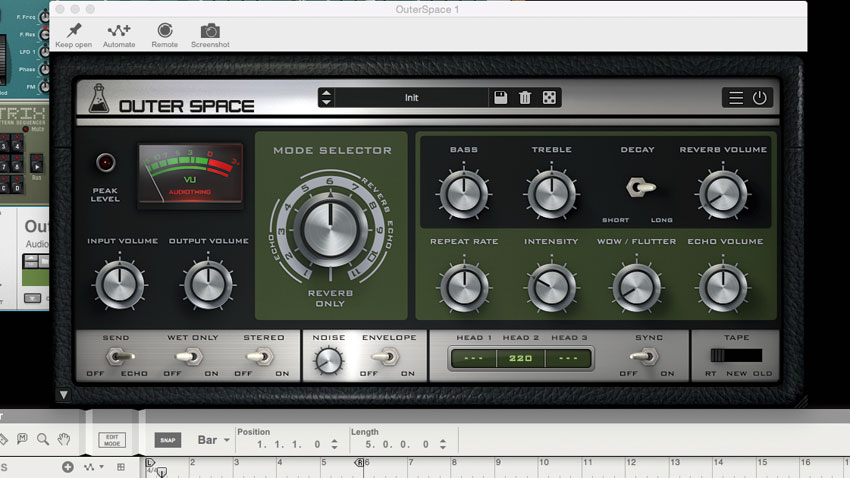
Step 2: Let’s have a listen to our sequence. It’s not what one would describe as thrilling, yet these sorts of sequences can become quite lively with a bit of echo added. Let’s see what a bit of vintage delay might do for the sound - we open up an instance of Outer Space on the synth channel.
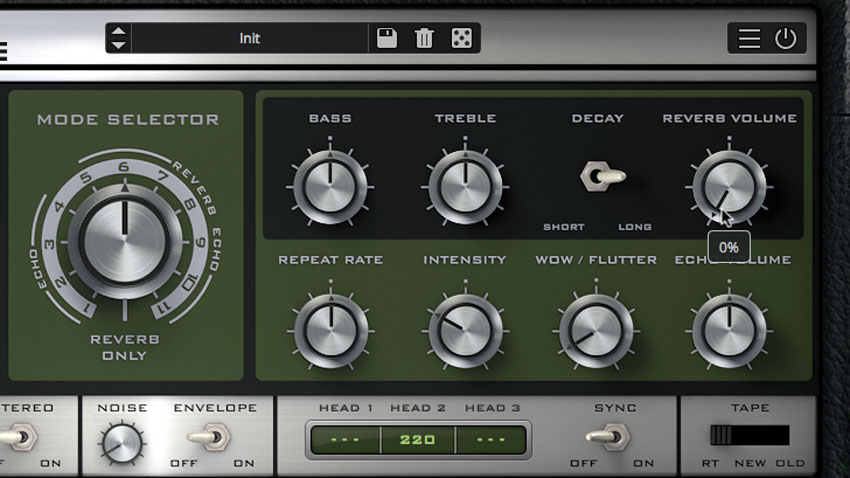
Step 3: Even Outer Space’s default settings add an instant retro vibe, with a short delay and a touch of mechanical reverb. Let’s focus on the delay for now. Find the Reverb Volume knob in the upper-right and turn it all the way down. The signal is now less spacious, but still cool.
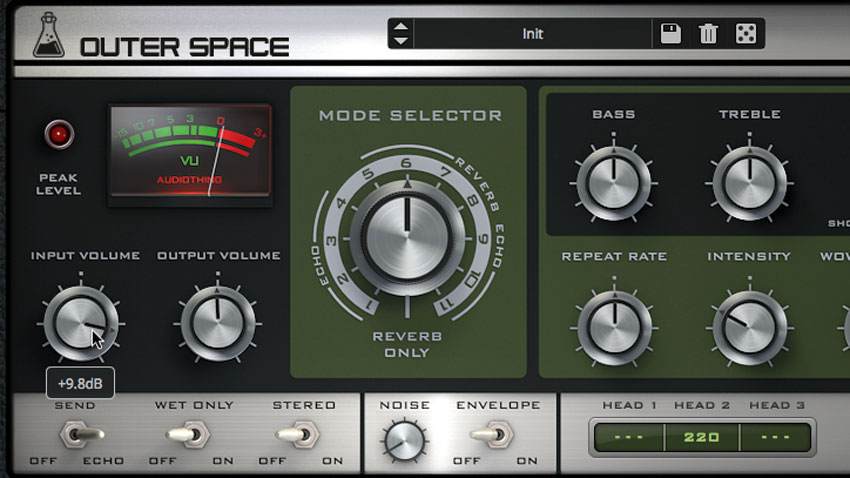
Step 4: As was the case with the original hardware, Outer Space’s input can be cranked for an awesome overdriven sound. Turn up Input Volume until the Peak Level light hits the red. Be careful with your monitor levels, though - you don’t want to damage your speakers or ears!
Want all the hottest music and gear news, reviews, deals, features and more, direct to your inbox? Sign up here.

Step 5: Let’s compensate for that input gain by dialling back the Output Volume a little. Note that the increase in level causes our echoes to become more pronounced, with more feedback - just like the real thing! Next, find the Noise knob at the bottom and turn it up to 22%.
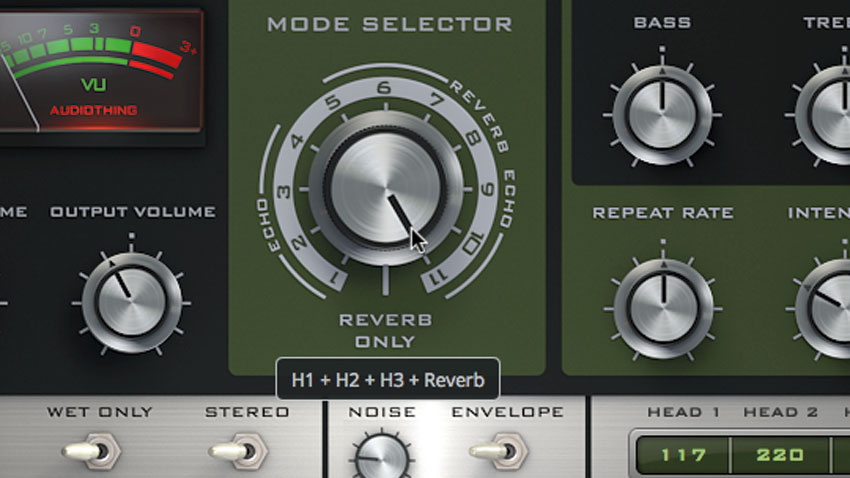
Step 6: Outer Space is a model of a three-head echo machine. On such a machine, the heads are spaced apart, so you can create interesting multi-echo rhythms. Currently, only the middle head is active. We can choose which heads are in play with the big Mode Selector knob. Select Mode 11.
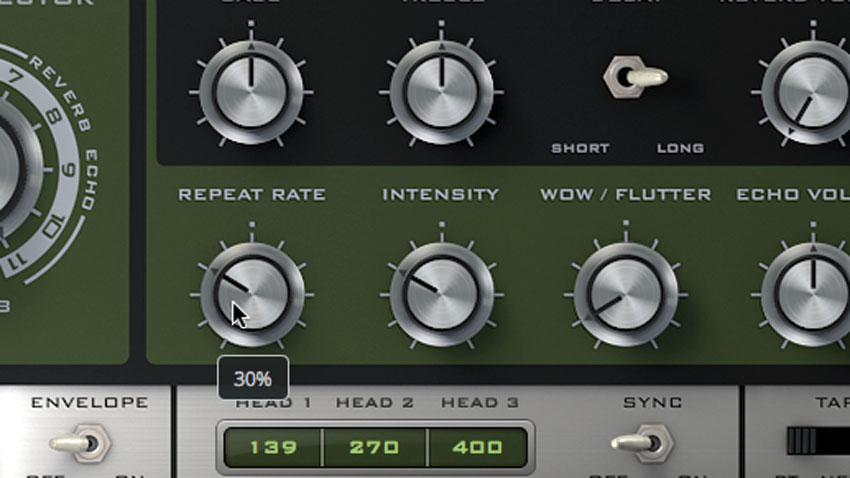
Step 7: Now we’ve got some really cool interplay between echoes, though they’re not in time with the sequence. We’re not going to engage host sync, though, as the original machine was incapable of such perfection. Instead, adjust the Repeat Rate knob until it sounds right.
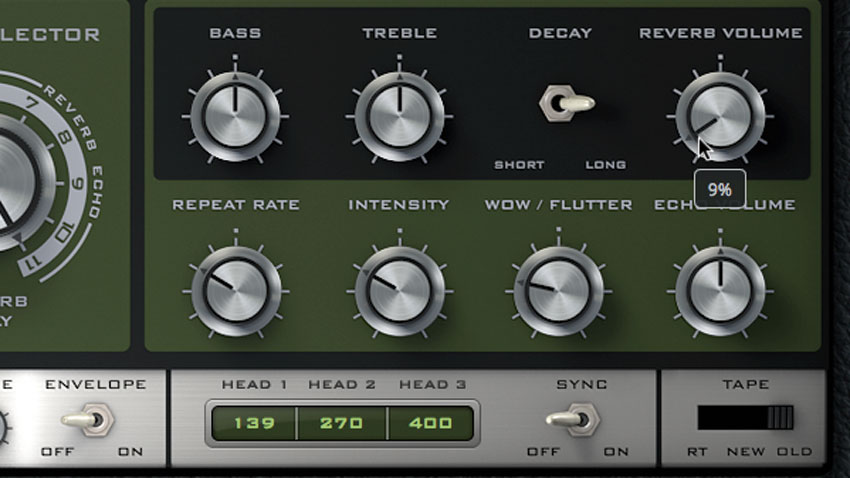
Step 8: There’s a switch in the lower-right for selecting the type of tape used in the machine. We’re going to flick that switch all the way to the right, to the Old position. Let’s also age the machine itself by cranking up the Wow/Flutter dial. Finally, go back to the Reverb Volume knob and dial some ’verb back in.
Computer Music magazine is the world’s best selling publication dedicated solely to making great music with your Mac or PC computer. Each issue it brings its lucky readers the best in cutting-edge tutorials, need-to-know, expert software reviews and even all the tools you actually need to make great music today, courtesy of our legendary CM Plugin Suite.
